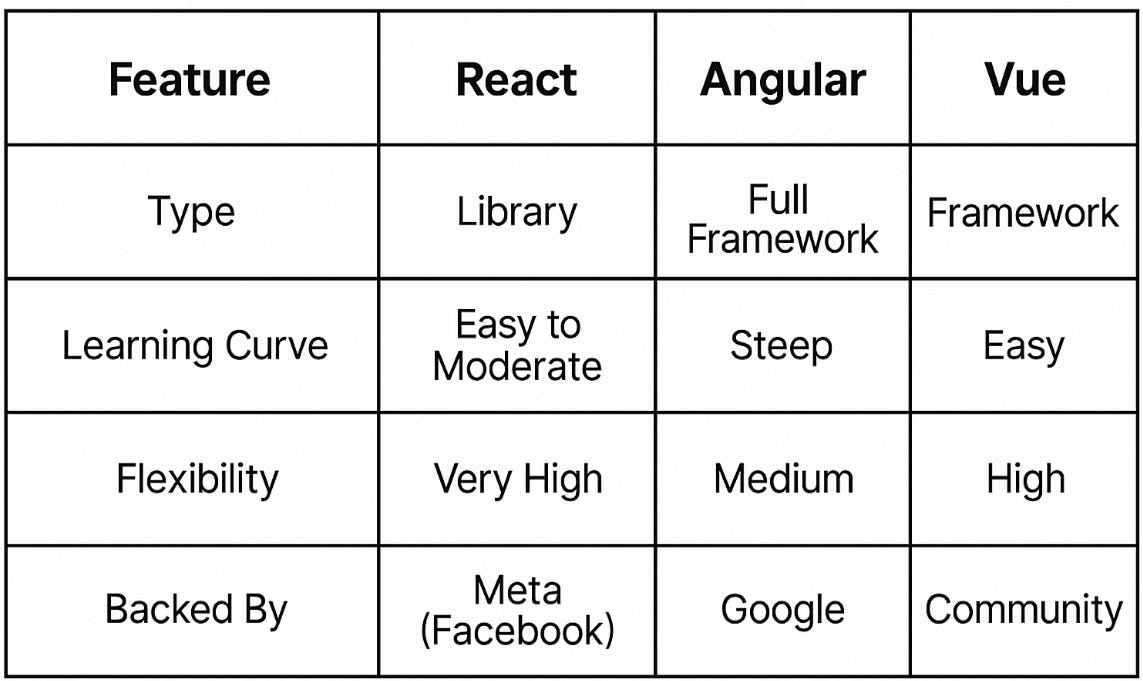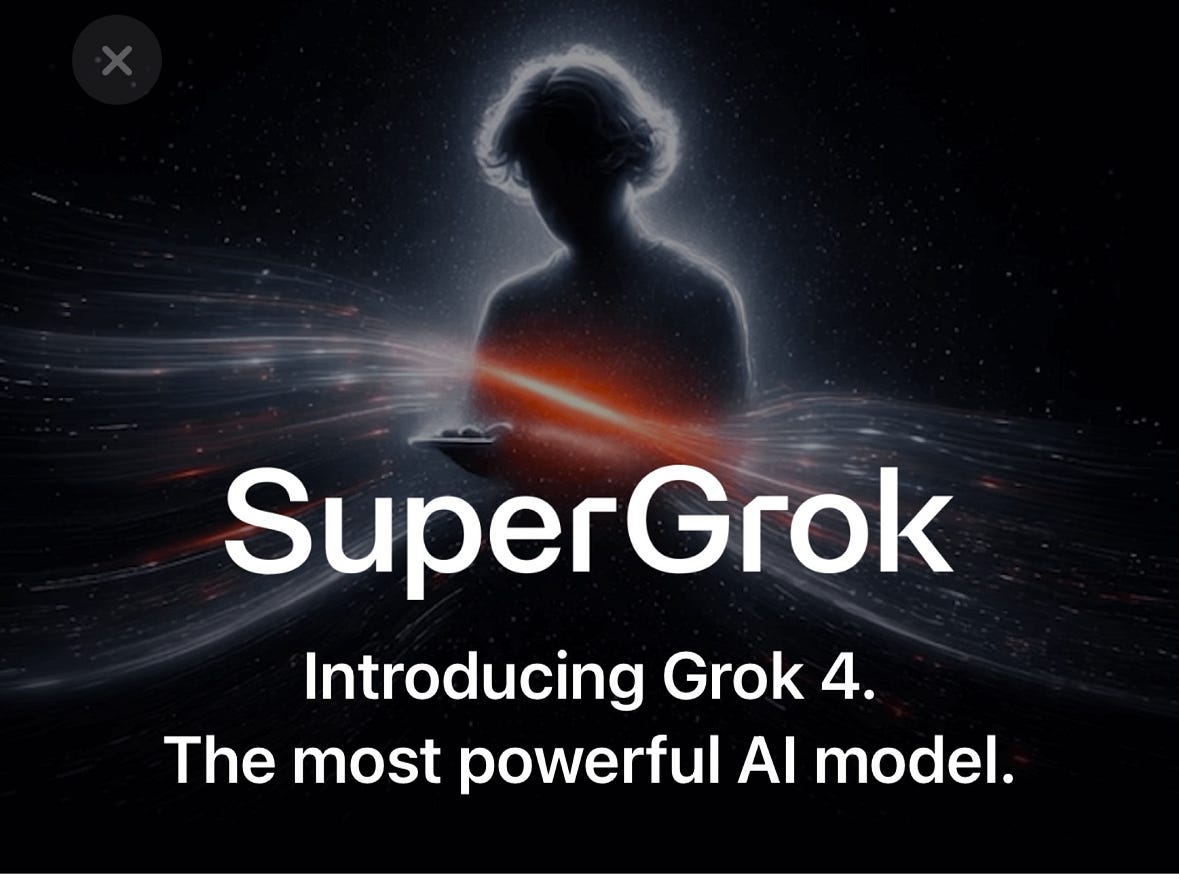Programming News
Dev
306

Image Credit: Dev
Memory Safety Revolution Memory Leaks Modern Web3113
- Article discusses Rust-based web framework's memory safety revolution in systems programming.
- Features: Rust's memory safety guarantees, zero-copy data processing, memory pools, object reuse.
- Real application benefits include zero memory leaks, high performance, and thread safety.
- Framework ensures stable memory usage, improved concurrent performance, and system stability.
Read Full Article
18 Likes
Medium
303

Image Credit: Medium
From Backend to Frontend: A Complete Guide to Building a Task Manager with FastAPI and React
- FastAPI and React are a powerful combination for modern web development, with FastAPI offering speed and automatic documentation for building APIs, and React excelling at building interactive user interfaces.
- The article provides a comprehensive guide on building a Task Manager application from scratch, emphasizing the importance of clean project structure and using tools like Vite for React project setup.
- Key steps include setting up a Python backend using FastAPI, creating API endpoints, generating interactive documentation with Swagger UI, setting up a React frontend with Vite, employing Tailwind CSS for styling, and using axios for HTTP requests.
- Ultimately, by following the guide, developers can successfully create a full-stack web application that effectively communicates between the FastAPI backend and the React frontend, showcasing modern web development practices.
Read Full Article
18 Likes
Alvinashcraft
40

Dew Drop – July 11, 2025 (#4457)
- The latest tech news includes updates on various AI, coding, and development tools.
- Highlights include AI Toolkit for VS Code and GitHub Copilot customization.
- .NET MAUI improvements and VS Code releases are also featured in the news.
- Topics cover AI governance, security, software development best practices, and more.
Read Full Article
2 Likes
Medium
1

Image Credit: Medium
Bazaar closure: being system: 3 points are enough to exist.
- The article discusses the concept of a being system where three points are essential for existence.
- It emphasizes the importance of the relationship between a father, child, and mother in maintaining balance and existence within a family.
- The text delves into the idea that forgetting a single point in the being system can lead to a downfall, highlighting the significance of familial unity and responsibility.
- The article concludes with a message about awareness, responsibility, and the interdependence of family members in the being system.
Read Full Article
Like
Discover more
- Software News
- Web Design
- Devops News
- Open Source News
- Databases
- Cloud News
- Product Management News
- Operating Systems News
- Agile Methodology News
- Computer Engineering
- Startup News
- Cryptocurrency News
- Technology News
- Blockchain News
- Data Science News
- AR News
- Apple News
- Cyber Security News
- Leadership News
- Gaming News
- Automobiles News
Medium
271

Image Credit: Medium
Introduction to React.js: Why It Matters in 2025
- React.js is significant in 2025 due to factors like fast performance using a virtual DOM and a declarative syntax.
- It boasts a large ecosystem with numerous libraries and frameworks built around React, along with massive community support.
- React is versatile, being used for various applications including admin panels, e-commerce websites, mobile apps (via React Native), and desktop apps (utilizing Electron + React).
- It provides flexibility in tool selection, is beginner-friendly with abundant tutorials, and covers topics like building forms, connecting to APIs, and deployment best practices.
Read Full Article
16 Likes
Medium
202
Image Credit: Medium
The Mind-Reading Magic: How AI Coding Assistants Actually Know What You’re Thinking (And Why It’s…
- Sophisticated AI coding assistants like GitHub Copilot, Tabnine, and Amazon CodeWhisperer can predict coding patterns and assist developers effectively in their coding tasks.
- GitHub Copilot goes beyond autocompletion by reading comments, understanding project structures, and generating entire functions based on context.
- Tabnine is trained on the user's codebase to learn coding style, variable naming conventions, and individual coding habits for enhanced assistance.
- Amazon CodeWhisperer specializes in AWS services and security best practices, offering guidance similar to a knowledgeable senior developer.
Read Full Article
9 Likes
Dev
211

Image Credit: Dev
How to Prevent Overload in Cross-Border Business: Choose the Right CDN Scheduling from 3 Options
- Cross-border CDN scheduling systems optimize content delivery based on factors like geographical proximity, server load, network conditions, resources, and compliance requirements.
- They perform intelligent request routing and load distribution to ensure fast content delivery, prevent overloads, and maintain high availability.
- Different scheduling options like DNS routing, 302 scheduling, and Anycast routing offer unique advantages for cross-border scenarios, providing precise control, global coverage, and efficient traffic management.
- A hybrid approach combining multiple scheduling methods can be effective, with 302 scheduling for precise control, Anycast for global coverage, and DNS scheduling as a cost-effective option.
Read Full Article
12 Likes
Dev
141

Image Credit: Dev
Coroutine Scheduler Implementation9503
- Exploring Hyperlane framework in Rust-based web development reveals performance and safety advantages.
- The framework emphasizes zero-cost abstractions and compile-time guarantees for robust applications.
- Context-driven architecture simplifies request handling, while middleware system enables clean concerns separation.
- Real-time communication, performance analysis, memory optimization, and advanced features showcase framework's capabilities.
- Best practices, error handling, troubleshooting tips, and future directions enhance production readiness.
Read Full Article
8 Likes
Medium
186

Image Credit: Medium
Super Grok: A Leap Toward Truth-Seeking AI That Could Redefine Our World
- Super Grok, powered by Grok 3, offers revolutionary AI capabilities and multimodal features.
- DeepSearch provides real-time data access, reasoning prowess rivals human experts, and multimodal mastery.
- Democratizing AI, Super Grok's pricing, features, and commitment to truth-seeking redefine innovation.
- Challenges like pricing, competition, and platform reliance shape Super Grok's future.
Read Full Article
10 Likes
Medium
241

Image Credit: Medium
Title: "When money talks — A Story of Success and Silence" (
- Zayan, a dreamer with big aspirations, faced challenges finding employment due to lack of experience.
- Despite setbacks, Zayan came across a tweet encouraging him to learn new skills, leading to freelance work and a sense of empowerment.
- However, after a contract ended, Zayan struggled to secure more work, feeling disheartened by rejections.
- Zayan eventually received messages of positivity, founded his own influence, and embraced a positive mindset for the future.
Read Full Article
14 Likes
Medium
115

Image Credit: Medium
Your Coding Journey Starts Here: Setting Up Your PC for Development in 2025
- Setting up your computer for coding is crucial for aspiring developers.
- Checking your system specs is essential to ensure your PC meets the technical requirements.
- Visual Studio Code (VS Code) is recommended as the IDE for coding, and installing extensions can enhance its functionality.
- Preparing your computer with the right tools and ensuring it meets modern requirements is the first step in your programming journey to becoming a developer in 2025 and beyond.
Read Full Article
6 Likes
Medium
105

Image Credit: Medium
10 Beginner-Friendly Machine Learning Project Ideas You Can Actually Finish
- 10 beginner-friendly machine learning projects are highlighted to bridge the gap between theoretical knowledge and practical application.
- Projects are recommended as the best way to understand how machine learning works in real-world scenarios.
- Readers are encouraged to start with building one or two projects from the list without worrying about perfection but focusing on understanding the data, goal, and process.
- Upon completion, readers are advised to write a blog post, push the project to GitHub, and share it to potentially enhance their ML opportunities like landing an internship.
Read Full Article
6 Likes
Dev
33

Image Credit: Dev
Mastering React Hooks in 2025! 🚀
- The guide provides insights into modern React Hooks, offering a cleaner approach to managing state, side effects, context, and performance in functional components.
- Covered topics include useState for managing state, useEffect for handling side effects like data fetching, useContext for accessing context values, useRef for persisting values without re-rendering, useMemo for optimizing expensive calculations, useCallback for preventing function recreation, useLayoutEffect for syncing with the DOM before painting, and more.
- These hooks are essential for projects, interviews preparation, or enhancing skills in React development and are presented as must-know tools for developers.
- For further learning content and tutorials, visit https://mohitdecodes.com.
Read Full Article
2 Likes
Dev
130

Image Credit: Dev
The Story of AI: From Brain Cells to ChatGPT(… and what it really wants)
- In 1943 during World War II, McCulloch and Pitts attempted to describe the brain using math, sparking the idea of simulating intelligence through computation.
- The evolution of AI saw attempts with rule-based logic in the 60s, neural networks in the 80s, to breakthroughs in 2012 with deep nets excelling in image recognition.
- The development of AI has led to ChatGPT and advancements like teaching sand to dream in probabilities, highlighting the journey of artificial intelligence.
- An individual has created 'boringskool' to explore the evolution of AI and encourages viewers to be engaged and awakened in this era of technological progress.
Read Full Article
7 Likes
Dev
354

Image Credit: Dev
__getitem__ & __setitem__ in Python (1)
- The use of __getitem()__ and __setitem() in Python allows for custom implementations in classes to enable subscripting and item assignment.
- __getitem()__ can make class objects subscriptable and iterable, allowing values to be retrieved based on keys of various types.
- __setitem()__ enables class objects to be assignable, setting values based on keys and values of different types.
- The examples provided showcase how to implement __getitem()__ and __setitem() methods in a custom class and demonstrate their usage for retrieving and setting values in various scenarios.
Read Full Article
21 Likes
For uninterrupted reading, download the app